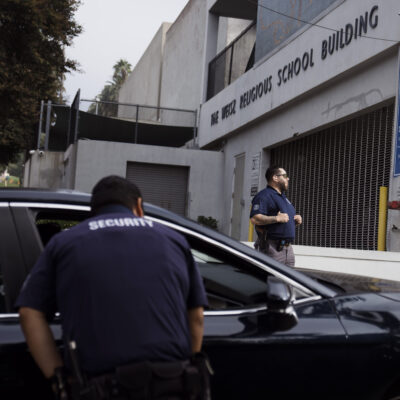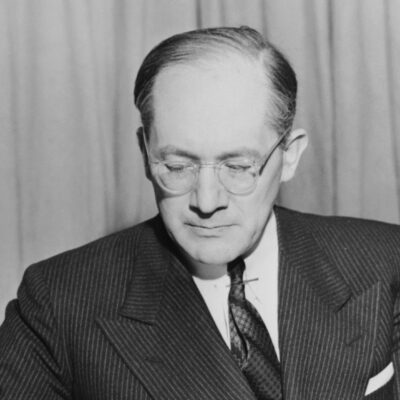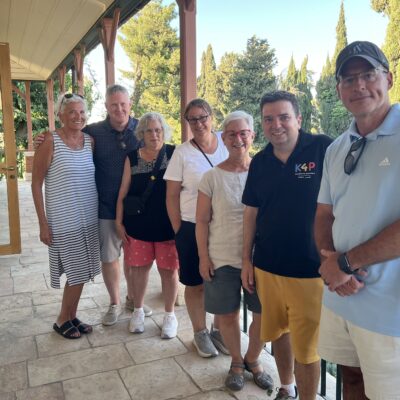Reframing Conversations at Auschwitz: A Social and Emotional Learning Approach to the March of the Living

By Joey Eisman
[The following is part of an essay series on Social and Emotional Learning (SEL) in Jewish education presenting low-barrier methods for infusing SEL into the work of Jewish educators. It is important to note that this piece was written before the current COVID-19 pandemic. We maintain the content is still relevant, especially for educators who must balance validating learners’ emotions and reframing these intense emotions allowing for productive learning and application. If you are interested in learning more about how to enhance your work with SEL in your educational setting, congregation, organization, etc., we encourage you to contact the author. The series is edited by Joey Eisman (Teachers College, Columbia) and Dr. Jeffrey Kress (William Davidson School – JTS).]
In this SEL essay series, my colleagues Josh Friedman and Shira Hammerman wrote about the power of words. I experienced a jarring example of that when I led a bus of teenagers on the March of the Living (MOTL) as part of BBYO’s National Delegation. After touring, our teenagers were crying from the pain of the stories and wretched realities found in the Auschwitz II-Birkenau camp. They sought comfort in each other, embraced, and began to ruminate. One participant, dressed in her bright blue MOTL jacket said, “I feel so guilty. I am so cold, and I am wearing this jacket. I could not imagine what the people here had to go through. How cold they must have been.” That teen was looking for words to process her emotions and the best word she found to describe her feelings was guilty.
Journeying on immersive-educational programs can often elicit intense emotional responses, especially when standing in an infamous site like Auschwitz. This is beyond understandable. However, negative emotions in particular can pose a challenge for educators who deal with emotional topics. Thus, I propose a two-pronged approach based on self-regulation, and cognition and semantics to help make these experiences more meaningful.
Self-Regulation
Negative emotional triggers can leave some participants confused, angry, sad, etc. Educators can give participants time between the emotionally charged experiences and reflection. Allowing time between can prevent carryover, which occurs when we “carry” our emotional-state from one experience to the next. For example, I might project sadness during a group discussion after immediately becoming sad while viewing a gas chamber. Decreasing the intensity of the negative emotions can also help us better process what we are experiencing. In fact, negative emotions block our ability to thoroughly process information.[1] For instance, consider a time when you were sad or angry, how easy was it for you to think and connect ideas? Oftentimes we struggle to think clearly when experiencing negative emotions. When we are neutral or happy, thinking is easier.
Beyond giving time between experiences, I also encourage groups to do deep breathing exercises, especially before a group discussion. During this opening, educators can validate the emotions of their group and remind participants to accept their emotional state but to not let their emotions control them. In essence, educators can ground the group by standardizing reflections through 1) collective breathing, 2) emotional affirmation, and 3) reflection.
Semantic Framing
Thinking back to my experience leading teenagers on MOTL, I believe what my participant felt was extreme sadness and not guilt. Guilt, which is defined as a negative emotion, is associated with feelings of responsibility – I caused harm and I feel guilty.[2] It is hard to say exactly what she experienced in Auschwitz. Maybe she was expressing privilege-guilt towards the travesties and inequities in the modern world. Maybe she was recalling a recent memory with a family member or a person fallen on hard times. I do not know. What I can say is that we all felt something, and the word guilt just made sense. Our feelings were real, but I suspect the word guilt was incorrect.
Feeling guilty often leads us to express remorse in order to mitigate the negative emotion. But when we are not actually guilty, we may be addressing the emotion in a way that does not necessarily lead us to productive action. Moreover, as previously noted, this may actually hinder our experiential education opportunities because negative emotions, like guilt, are self-preserving and prevent us from meaningfully reflecting on our experiences. [3]
Inversely, positive emotions with high arousal can better integrate our new experiences with existing cognitive structures, or enable our ability to synthesize and get ‘the gist’.[1] Positive emotions and ideas can be advantageous on MOTL because they are broad[4] and help us retain the ideas in the long-term [5].
To be clear, I am not advocating we make MOTL a happy experience. Instead, I am explicitly saying that when we hear a participant express guilt, we push them to express their feeling in a de-escalated emotional frame. For example, instead of “guilty,” ask: For what are you responsible? For what do you have gratitude? Where do you find opportunity? Where do you want to make an impact? This is also true when a participant is processing their anger or sadness and feels stuck. Give them time to self-regulate and then reframe their frustration and feelings of desolation with the questions above to help them better process their experience.
This is not about being happy. You should allow your participants to express sadness and anger. This is about helping them process what they are experiencing in a productive way and help them bring the experience home. Thus, when I heard my participant exclaim she felt guilty, I would have turned to her and say, “Instead of expressing guilt, where do you have agency to right these wrongs? For what are you responsible?”
Reframing into ideas that are more emotionally neutral or positive, and forward-thinking, allow us to not only keep the memories of the Holocaust alive, but also encourage our participants to become upstanders in the world. We can help them explore how they want to make a change and ensure that “Never Forget” is a drive toward action!
Joey Eisman is currently a consultant and graduate student at Teachers College, Columbia University, and formerly a Senior Program Manager at BBYO, managing their global expansion and operations. He is a graduate of M2 and can be reached at josepheisman@gmail.com.
- Gillet, A-L, & Jallais, C., (2012). Mood’s influence on semantic memory: Valence or arousal? In S. Masmoudi, Dai, D. Y., & Naceur, A. (Eds.), Attention, representation, and human performance: Integration of cognition, emotion, and motivation. New York: Psychology Press.
- Fischer, K. W., Shaver, P. R., & Carnochan, P. (1990). How emotions develop and how they organise development. Cognition And Emotion, 4(2), 81-127. doi:10.1080/0269993900840714
- Kensinger, E. A., & Schacter, D. (2016). Memory and emotion. In L. F. Barrett, M. Lewis, & J. M. Haviland-Jones (Eds.), Handbook of emotions (4th ed., pp. 564-578). New York: Guilford.
- Fredrickson, B. L. (2004). The broaden-and-build theory of positive emotions. Philosophical Transactions of the Royal Society of London, B Series: Biological Sciences, 359, 1367–1378.
- Fredrickson, B.L. (2001). The role of positive emotions in positive psychology. American Psychologist, 56(3), 218-226.

 Add EJP on Google
Add EJP on Google









